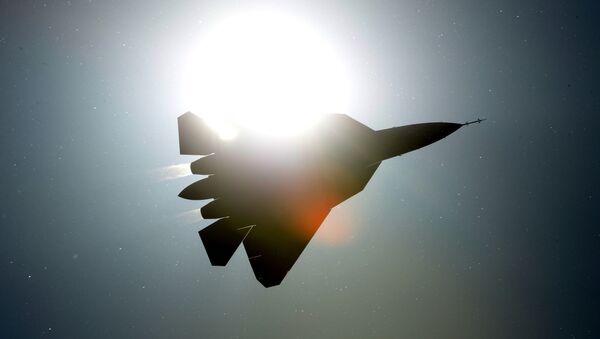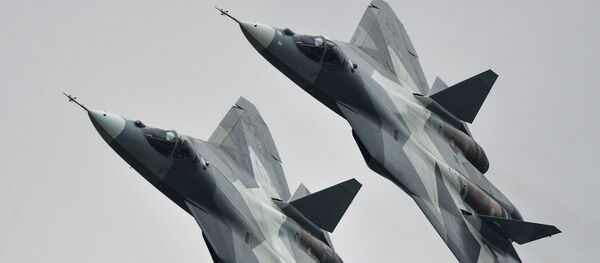Defense Minister Sergei Shoigu signaled Wednesday that Russia has managed to achieve strategic parity with NATO, despite the fact that it spends on defense far less than the United States; according to Russian military expert Viktor Baranets, "the West will never reconcile itself to it."
Delivering a speech at a government session in the upper house of the Russian parliament, Shoigu pointed out that Russia spends 11 times less than the United States on defense and one-third of China's defense spending.
"Our defense spending is 11 times less than in the United States, and one-third in comparison with China," Shoigu said, estimating the upkeep of one US soldier at $510,000 on average, $170,000 in China and $54,000 in Russia.
In addition, Russia's new cutting-edge S-500 surface-to-air missile system with a range of 400-600 kilometers (250-370 miles) will enter into service in 2020.
"Troop deliveries of the T-50 advanced front-line aviation airborne complex [are scheduled] as of 2019, and in 2020 the S-500 air defense system will increase the efficiency of the fight against modern means of air and space attack," Shoigu said.
The defense minister emphasized that the implementation of the plan "will create a reliable barrier to a [potential] prompt global strike" and "will ensure a non-nuclear deterrence of any high-tech aggressor."
Speaking to Radio Sputnik, Viktor Baranets shed light on Russia's newest developments in the military sphere.
Commenting on Russia's most advanced S-500 anti-aircraft missile defense system, Baranets pointed out that the system is capable of reaching the "bottom edge" of space and hitting ballistic targets at an altitude of about 100 kilometers.
"This is the most serious breakthrough of the brilliant designers of our defense industry. And here we have already stepped on the toes of [one of its] competitors — the US-made Terminal High Altitude Area Defense (THAAD), which [Washington] is actively promoting in Japan and South Korea," the military expert told Radio Sputnik.
In his April interview with Sputnik, Baranets also noted that the S-500 system will also outperform the US' Patriot Advanced Capability-3 (PAC-3) missile system.
"The S-500 will also be able to quickly destroy targets flying below the 100-kilometer ceiling, including planes, helicopters and cruise missiles. As for its main competitor — the Patriot PAC-3 missile system, its main disadvantage is its short damage radius of just 20 kilometers," Baranets said.
"Now there is a new methodology for calculating parities," Baranets remarked. "Today parity is calculated not by the number of guns, but, first of all, by nuclear capabilities."
The military expert explained that the enforced military contingent which NATO is building in Europe could be neutralized by several RS-24 Yars (NATO reporting name: SS-29) intercontinental ballistic missiles.
He recalled that Russia also continues to develop its "elusive" Combat Railway Missile Complex (BZhRK).
The new project is codenamed "Barguzin," after the strong Baikal wind. Each "Barguzin" train will be armed with six ICBMs RS-24 Yars.
"I think that in a year and a half [Barguzins] will move across Russia, increasing the headache of those Western hawks who turn a deaf ear to Moscow's plea to stop the nuclear race and, in general, the arms race," the military expert told Radio Sputnik.





